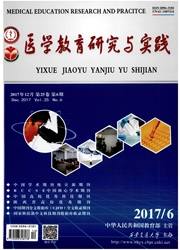

 中文摘要:
中文摘要:
目的:从海马神经元谷氨酸离子型受体--AMPA受体亚基GluA1的831位丝氨酸(GluA1Ser831)磷酸化角度,探讨M1乙酰胆碱受体对AMPA受体GluA1亚基的调控作用及作用机制。方法:本研究以成熟的原代海马神经元为实验对象,用不易被降解的卡巴胆碱(Carbachol,CCh)作为胆碱受体激动剂,以免疫印迹法作为蛋白和磷酸化蛋白的主要检测手段,结合不同蛋白抑制剂研究M1受体调控AMPA受体GluA1亚基的关键信号分子及其机制。结果:1与对照组相比,CCh组Ser831的磷酸化水平显著升高。2CCh促进Ser831磷酸化的现象在M1受体选择性拮抗剂哌仑西平(Pirenzepine)+CCh组消失,CCh升高GluA1-Ser831磷酸化水平的作用由M1受体介导。3蛋白激酶C(ProteinkinaseC,PKC)抑制剂白屈菜红碱(Chelerythrinechloride,CHCL)能对抗CCh促进GluA1-Ser831位点磷酸化的作用,而钙/钙调素依赖性蛋白激酶II(Calcium/calmodulin-dependentkinaseII,CaMKII)抑制剂KN62不能对抗CCh的作用。4为检测体内GluA1-Ser831的磷酸化情况,用小鼠海马组织定位注射CCh和CHCL,CCh组小鼠海马组织GluA1-Ser831位点的磷酸化水平升高,CHCL能对抗这种作用,PKC介导了M1受体激活所导致的GluA1-Ser831磷酸化水平的升高。结论:M1受体通过激活PKC促进GluA1-Ser831的磷酸化。
 英文摘要:
英文摘要:
Objective: By monitoring the phosphorylation of GluAl-Ser831 in hippocampal neurons, we explored the underlying mechanism of modulation of AMPA receptor by M1 muscarinic acetylcholine receptor. Methods: This study made use of the maturely cultured primary hippoeampal neurons and carbachol (CCh), an acetylcholine receptor agonist which was resistant to degradation. West- ern Blot was used as the main method for the detection of protein and protein phosphorylation, and a variety of different protein inhibitors were utilized to study the signaling molecules of Ml receptor regulating phosphorylation ofGluA1 subunit. Results: ①CCh increased the phosphorylation of GluAl at Ser831 compared with control group. ②The up-regulated phosphorylation of GluA1-Ser831 by CCh was at- tenuated by added Pirenzepine in CCh, suggesting that CCh acted through M1 receptor to increase phosphorylation of GluA1-Ser831. ③ PKC inhibitor CHCL totally blocked the phosphorylation of Ser831 induced by CCh, whereas CAMKII inhibitor KN62 did not block the effects of CCh. ④ The hippocampus of mice were injected with CCh or CHCL to examine the effects in vivo. CCh increased the phos- phorylation of GIuA1 at Ser831. CHCL totally attenuated the increase of GluA1-Ser831 phosphorylation induced by CCh. Conclusion: The phosphorylation of GluA1 at Ser831 was promoted by M1 receptor through PKC.
 同期刊论文项目
同期刊论文项目
 同项目期刊论文
同项目期刊论文
 期刊信息
期刊信息
